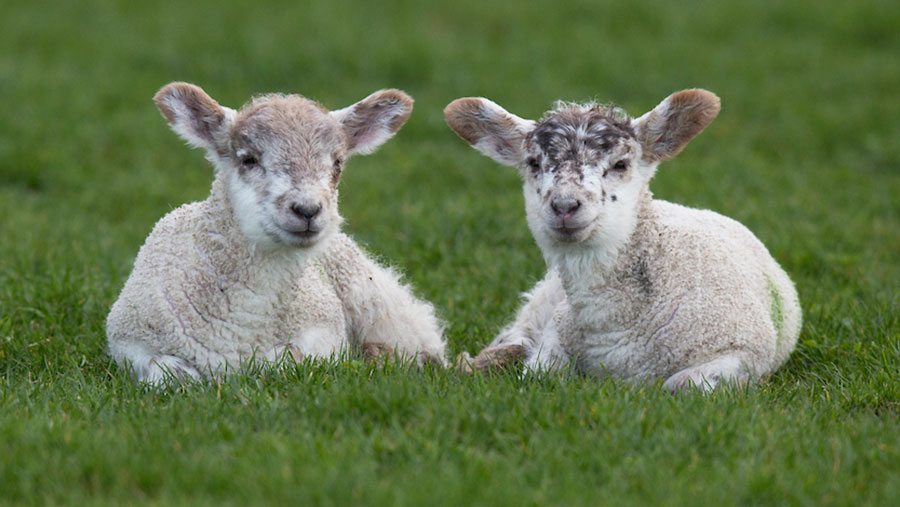Nematodirus risk in lambs rises sharply
 © Tim Scrivener
© Tim Scrivener Many farmers have been forced to treat lambs for nematodirus early after an unseasonably warm spring has brought hatching dates forward across the UK.
Nematodirus risk levels reported by Scops (Sustainable Control of Parasites in Sheep) have risen sharply since Good Friday, while early fly control reminders have also been issued by Nadis (National Animal Disease Information Service).
Farms are being advised to watch the growth and condition of lambs from around the six-week age, with even early-lambing flocks put at risk this year.
‘Very high’ (black) risk farms have been reported in all regions of the UK, including Keswick, Cumbria, and Aboyne, Aberdeenshire.
Met Office records show March temperatures were 1.3c above the 1981-2010 average at 6.8c.
See also: 10-step guide to taking a sheep faecal egg count
Independent sheep consultant Lesley Stubbings stressed that this year has been very different and forecasts should be followed to keep track of hatch activity.
“The warm spell in February put early-born lambs at risk and many farmers had to treat earlier than normal,” she said. “And then, as predicted, we also saw risk levels rise again after the cold start to April.”
Assessing risk in your area
Farmers are advised to visit the Scops forecast to look at changing risk status in their local area.
The map is updated daily with weather data from 140 weather stations updating an interactive Google map.
Sheep farmers should then consult a vet or adviser as regard to treatment options and timings.
However, some cooler areas in the east and north have not yet reached this threshold and farmers in these areas are advised to watch forecasts carefully.
Action you can take
- Avoid infection if possible by grazing lambs on low risk pastures that were not grazed by lambs the previous spring.
- If you cannot avoid high risk pasture grazed by lambs the previous spring, and decide you need to treat for nematodirus, Scops advises farmers to use a white (1-BZ) drench, which is still highly effective on most farms and suitable for young lambs.
- Use the Scops ‘Know Your Anthelmintics’ guide to select a product. These are still highly effective against this parasite on most farms and suitable for young lambs.
- Conduct a post-drench faecal egg count (FEC) seven to 10 days after treatment. Remember, it may be necessary to treat lambs more than once depending on the spread of ages in a group and subsequent weather conditions.
Nematodirus: What are the risk factors?
If you answer ‘yes’ to questions number one and another question, then your lambs are at risk.
- Are your lambs grazing pasture grazed by lambs last spring?
- Are lambs 6-12 weeks of age i.e. old enough to be eating significant amounts of grass and are ewes milking well?
- Do you have groups where there is also likely to be a challenge from coccidiosis? For example, mixed-aged lambs are a higher risk.
- Has there been a sudden, cold snap recently followed by a period of warm weather?
- Have you got lambs that are under other stresses e.g. triplets, fostered, on young or older ewes?
